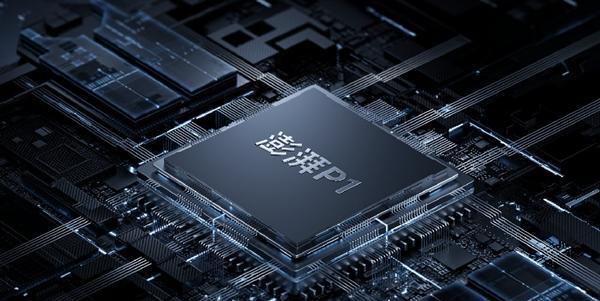In 2021, it is not surprising that domestic mobile phone manufacturers have developed their own chips. Not long ago, vivo and OPPO both launched image processing chips, and Xiaomi is also aiming at a new direction after launching its self-developed ISP.
At the Xiaomi Mi 12 series conference on Tuesday, Xiaomi officially announced its self-developed third chip - the surging P1.
Lei Jun said at the press conference that the Xiaomi 12Pro contains two charging chips developed by Xiaomi, using a 120w single-cell charging scheme, which lasted 18 months, and has been jointly developed by many places to fill the gap in the industry.
What is the strength of Xiaomi's charging chip? Is it necessary for mobile phone manufacturers to develop their own power chips?

Xiaomi, which is obsessed with fast charging, developed a charge pump chip
Since the charging power of the Xiaomi Mi 3 has been increased to 10W, Xiaomi has officially laid out fast charging. In 2014, the Xiaomi Mi 4 standard fast charging head became the first batch of chargers to pass the QC2.0 fast charging certification, after several iterations to 2020, Lei Jun launched the Xiaomi 10 Extreme Edition at the 10th anniversary of Xiaomi, and announced that it supports 120W wired second charging, walking to the forefront of the fast charging industry.
Behind the rapid development of fast charging technology, there are three core technologies as support: charge pump, series direct charging technology and graphene-based batteries.
The charge pump chip that Xiaomi officially announced and developed itself is one of the core technologies that support fast charging.
Liu Chong, director of the marketing department of Nanxin Semiconductor, introduced in an online open class that the charge pump, also known as the switched capacitor voltage converter, is a DC-DC that uses the so-called "flying Cap" to store energy. The charge pump works by controlling the charging and discharging of the flying capacitor in a certain way by an internal FET switching array, so that the input voltage is multiplied or decreased by a certain factor (0.52 or 3) to obtain the desired output voltage.
The biggest advantage of the charge pump is that it can achieve ultra-high efficiency, one is that the charge pump does not need inductor energy storage, and there is no energy loss on the inductor; Second, the switching frequency of the charge pump is relatively low, and the switching loss is very small.
Lei Jun said at the press conference that the surging P1 adopts a 120w single-cell solution, the circuit design is 2 times more complex, the mode switching control logic is 7 times more complex, the start and protection circuit is 9 times more complex, and the drive circuit design is 6 times more complex. With the blessing of surging P1, the density and capacity of the battery have increased by more than ten percent, the heat loss has been reduced by 30%, and in the process of charging, the ultra-fast mode can be fully charged with a battery of 4600 mA in only 18 minutes.
"Xiaomi's self-developed charging chip serves 120W fast charging, leading in the field of fast charging, and the current 120W fast charging chip is also the highest mass production in the industry." The technical staff of a domestic power chip company said to Leifeng Network.
The self-developed charge pump chip, or a strong proof of Xiaomi's continuous efforts in the field of fast charging.
Mobile phone manufacturers self-developed charge pump chip, how necessary is it?
Although power chips are more vertically segmented than ISPs, or even on the "edge", they are actually the largest segment in the analog chip field.
According to Founder Securities, the global power management chip market size will reach 55 billion US dollars in 2026, and there is huge market potential. Previously, Apple spent $600 million to acquire the British Dialog to realize the self-development of power management chips, and equipped its iPhone 12 series of mobile phones with self-developed PMIC.
It should be noted that the PMIC is a multi-channel power management chip, that is, a chip that integrates multiple power management functions in a single chip, which is different from the charge pump chip introduced by Xiaomi.
A technical staff of a domestic power chip company told Leifeng network that PMIC is more used in traditional charging, such as 18W or 20W, mainly managing the proprietary charging and CV charging of the battery, and the charge pump chip mainly plays a role in the fast charging stage.
More importantly, due to the better synergy and compatibility of PMIC and SoC of the same chip manufacturer, mobile phone chip manufacturers such as Qualcomm and MediaTek usually bundle PMIC with their SoC master. So does Xiaomi's self-developed charge pump face the same problem?
Another industry insider said that the current charge pump has not been integrated into the PMIC, and there is no problem of synergy and compatibility.
However, this does not mean that the self-developed charge pump chip of mobile phone manufacturers is the right path.
"Although the patent barriers to charging ICs are not high, there are many types, which require a long time and huge R&D investment, plus there are already many charging IC companies in China, such as Voda and Nanxin, and mobile phone manufacturers do not need self-developed charging chips." A technical personnel of a domestic power chip company said.
"The gross profit of the charge pump itself is not high, and the domestic charge pump has been made very cheap, and there is no need for domestic mobile phone factories to develop themselves." Another industry insider shares the same view.